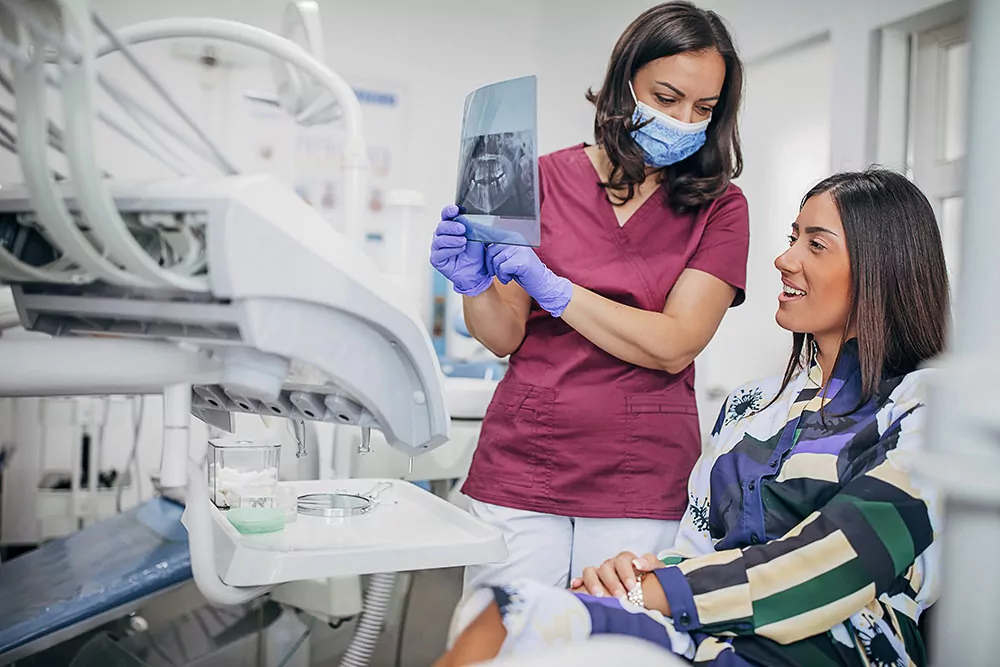A general dentist like Dr. Cluff has the primary responsibility to make sure you know how well you are doing with brushing and flossing to prevent tooth decay and periodontal disease. A full dental exam should be conducted twice a year, along with a professional cleaning by our hygienist, to be sure your oral health is in optimum shape. It doesn’t take long for a tiny cavity to become large or gums to become infected by bacteria that thrive on tiny particles of food that cling to teeth and can be hard to remove with just brushing and flossing.
As part of a general dentistry experience, the physical exam is to look at the gums and soft tissues and probe for signs of infection, as well as to see the dark spots on the edges of teeth that are the beginning of cavities (aka dental caries). If Dr. Cluff believes that some may be hidden in places especially hard to clean and difficult to see with the naked eye, she may feel a digital x-ray (involving minimal and very safe radiation) is justified.

X-rays show only the hard tissues and the dentist can immediately see where bacteria may have eaten away the outer layer of a tooth, the enamel, and the second protective layer, the dentin, before you feel any pain. It obviously is better to catch caries early before treatment becomes an emergency.
But digital x-rays are important for other reasons and it is generally wise to have a full-mouth set taken once a year. This will allow the dentist to examine the density of your jawbone. Sometimes a periodontal infection will get into the jaw and will gradually undermine the teeth so that multiple ones need to be immediately removed and replaced with dental implants or bridges. This also occurs without any pain, so the problem can be advanced and undetected without an x-ray and even require jawbone implants.
A full x-ray will provide a picture of different parts of the jaw and teeth, using a variety of techniques. Bitewings reveal cavities between teeth and show how crowns in the upper and lower arch match up. A periapical x-ray shows an image of a single tooth from root to crown. Occlusal x-rays allow the dentist to check the alignment of teeth and any abnormalities with palate development. A panoramic one will be used to examine wisdom teeth or investigate jaw problems.
Digital x-rays also enable Dr. Cluff to share them with a specialist, if a referral is needed. If you do not recall having had a full x-ray in the past couple of years, call today to set an appointment before any problems become serious.
